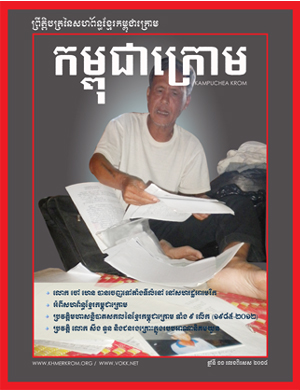Dowell, Jr. - CDC http://phil.cdc.gov/phil_images/20030203/6/PHIL_3084_lores.jpgother version:This media comes from the Centers for Disease Control and Prevention's Public Health Image Library (PHIL), with identification number #3084.Note: Not all PHIL images are public domain; be sure to check copyright status and credit authors and content providers.English| Slovenina| +/, Public Domain, https://commons.wikimedia.org/w/index.php?curid=743568, https://upload.wikimedia.org/wikipedia/commons/thumb/0/00/Bacteroides_fragilis_on_Fastidious_Anaerobe_Agar_-_Sensitive_to_Metronidazole.jpg/1920px-Bacteroides_fragilis_on_Fastidious_Anaerobe_Agar_-_Sensitive_to_Metronidazole.jpg, By Stefan Walkowski - Own work, CC BY-SA 4.0, https://commons.wikimedia.org/w/index.php?curid=38972261, https://upload.wikimedia.org/wikipedia/commons/c/ca/Bergeyella_zoohelcum.jpg, Bifidobacterium are Gram-positive diphtheroids that are highly irregular, branching, curved rods whose ends terminate in clubs or forked ends like dog bones, Bifidobacterium colonies on Nutrient Agar (NA), By CDC Public Health Image Library - This media comes from the Centers for Disease Control and Prevention's Public Health Image Library (PHIL), with identification number #2121.Note: Not all PHIL images are public domain; be sure to check copyright status and credit authors and content providers.English| Slovenina| +/, Public Domain, https://commons.wikimedia.org/w/index.php?curid=973324, By Nathan Reading from Halesowen, UK - Bordetella pertussis on Charcoal Agar, CC BY 2.0, https://commons.wikimedia.org/w/index.php?curid=18939711, By CDC - This media comes from the Centers for Disease Control and Prevention's Public Health Image Library (PHIL), with identification number #2116.Note: Not all PHIL images are public domain; be sure to check copyright status and credit authors and content providers.English| Slovenina| +/, Public Domain, https://commons.wikimedia.org/w/index.php?curid=903888, By Kubo Michal, CC BY-SA 2.5, https://commons.wikimedia.org/w/index.php?curid=11413738, Gram stain of C. jejuni shows Gram-negative "gull wing", curved rods, Capnocytophaga often creates orange-pigmented colonies on chocolate agar (CHOC), By CDC/ Dr. W.A. https://www.dalynn.com/dyn/ck_assets/files/tech/PX75.pdf, https://www.mibius.de/out/oxbaseshop/html/0/images/wysiwigpro/XLD_105287_engl.pdf, http://www.dalynn.com/dyn/ck_assets/files/tech/PS66.pdf, https://www.vetbact.org/?displayextinfo=57, https://microbeonline.com/eosin-methylene-blue-emb-agar-composition-uses-colony-characteristics/, https://microbeonline.com/xylose-lysine-deoxycholate-xld-agar-composition-preparation-results-uses/. Klebsiella aerogenes, [2] previously known as Enterobacter aerogenes, is a Gram-negative, oxidase negative, catalase positive, citrate positive, indole negative, rod-shaped bacterium. However, like other commensal or pathogenic bacteria, E. aerogenes has to undergo drastic changes in its gene expression profile in order to adapt to the host-associated conditions (15). One of the bi-products of fermentation is hydrogen gas. Enterobacter aerogenes is commonly seen as being the cause of lower respiratory tract infections, skin and soft-tissue infections, urinary tract infections (UTIs), endocarditis, intra-abdominal infections, septic arthritis, osteomyelitis, CNS infections, and ophthalmic infections. Chevalier, J., Bredin, J., Mahamoud, A., Mallea, M., Barbe, J., & Pages, J. Inhibitors of Antibiotic Efflux in Resistant Enterobacter aerogenes and Klebsiella pneumoniae Strains Antimicrobial Agents And Chemotherapy, 2004. The patient was administered broad-spectrum antibiotics including imipenem and polymyxin, consequently giving rise to imipenem and polymyxin-resistant mutants of E. aerogenes due to modifications in porin synthesis and LPS balance. Blood agar base was sterilized by autoclaving at 121at 15 lbs pressure for 15 min. It has also been known to cause infections in burn and trauma patients, post-surgical infections, diabetic infections, infections in those with peripheral vascular disease, infections of the skin, and septic abortions. She is particularly interested in studies regarding antibiotic resistance with a focus on drug discovery. Off-white or cream-colored, smooth, convex, pinpoint white centers, shiny opaque colonies. A resistance such as this one often arises de novo in patients receiving empiric therapy for systemic infections. Agents Chemother., Jun 1983; 23: 918 - 925. B. ecophenotypic variation. Enter the email address you signed up with and we'll email you a reset link. Sagar Aryal is a microbiologist and a scientific blogger. Successive Emergence of Enterobacter aerogenes Strains Resistant to Imipenem and Colistin in a Patient. Save my name, email, and website in this browser for the next time I comment. DOI:10.15347/wjm/2014.013., CC0, https://commons.wikimedia.org/w/index.php?curid=38652139, By CDC/ Dr. W.A. Incubate the plate upside down for at least 48 hours. He has published more than 15 research articles and book chapters in international journals and well-renowned publishers. larger fragments moving slowly and remaining closer to the wells. 2. It is . Cephalosporins are under the class of B-Lactam antibiotics and these type of antibiotics work by inhibiting bacterial cell wall synthesis. Additionally, E. aerogenes as well as other enteric bacteria, is known to have drug-resistant characteristics. Large, rough, irregular, grayish-white umbonate colonies, Produces acid from glucose, maltose, salicin fermentation, Produces a heat-labile toxin similar to enterotoxin of cholera (nausea, diarrhea, abdominal pain that lasts 12-24 hours), Produces a heat-stable toxin (severe nausea and vomiting with limited diarrhea), Vancomycin + an Aminoglycoside like Gentamicin, Neomycin or Streptomycin, Pleomorphic at times and pale-staining with rounded ends, occurring singly or in pairs, resembling "safety pins", Small, transparent-to-opaque, glistening, convex, round, smooth colonies that are white-to-gray, entire, and convex and non hemolytic, Use charcoal swab for nasopharyngeal culture, Round, small, glistening gray-white, shiny, convex, smooth colonies, Gram-negative, curved, helical rods that often look like "gull wings" or "S" shapes, IV fluids often needed with electrolytes for dehydration, Found in oropharyngeal tract of mammals and occasionally associated with bite wound infections and periodontal diseases, Can cause bacteremia, septic shock, arthritis, osteomyelitis, lung abscess, peritonitis, ovarian abscess, chorioamnionitis, conjunctivitis, endocarditis, meningitis, Tiny translucent, pinpoint, glistening colonies on blood agar, Some strains are beta-lactamase positive and MDR, Susceptible to penicillin and amoxicillin, Thick, spore-forming, Gram-positive bacilli, Produces lethal neurotoxin (blocks the release of acetylcholine from the presynaptic nerve terminals in the autonomic nervous system as well as the motor endplates, which leads to flaccid muscle paralysis), Large, boxcar-shaped,thick, Gram-positive rods with blunt ends (singles or pairs), Endospore-forming (large endospores either central or subterminal and oval in shape). Unable to load your collection due to an error, Unable to load your delegates due to an error. E. faecalis is a gamma hemolytic colony that appears glistening, gray-white, round, convex, entire, smooth, shiny on blood agar. Arch Microbiol. Pale white colonies as swarming growth with successive waves to form a thin sheer layer of concentric circles; swarming can be controlled by adding 0.1% boric acid. 3. Flat colorless colonies (non-lactose fermenting). Hemolysis - Blood Agar Intended Use Blood agar is used to support the growth of fastidious organisms and to determine the type of hemolysis (destruction of red blood cell walls) an organism produces. He worked as a Lecturer at St. Xaviers College, Maitighar, Kathmandu, Nepal, from Feb 2015 to June 2019. HHS Vulnerability Disclosure, Help Alpha-hemolysis () is caused by damage (but not lysis) of the RBCs in the blood; the media is translucent with a green-ish tinge around the colonies (1). E. aerogenes as well as others in its genus are known to be resistant to antibiotics, especially E. aerogenes and E. cloacae. Encyclopedia of Microbiology. 80 No. document.getElementById( "ak_js_1" ).setAttribute( "value", ( new Date() ).getTime() ); This site uses Akismet to reduce spam. Microbial Culture Media- Definition, Types, Examples, Uses, Amazing 27 Things Under The Microscope With Diagrams, Bacteria- Definition, Structure, Shapes, Sizes, Classification, VRBA- Composition, Principle, Preparation, Results, Uses, Cultural Characteristics of Citrobacter freundii, Citrobacter freundii on Violet Red Bile Agar (VRBA), Citrobacter freundii on Salmonella Shigella (SS), Cultural Characteristics of Enterobacter cloacae, Enterobacter cloacae on Violet Red Bile Agar (VRBA), Enterobacter cloacae on Salmonella Shigella (SS), Enterobacter cloacae on Bile Esculin Agar, Cultural Characteristics of Klebsiella oxytoca, Klebsiella oxytoca on Violet Red Bile Agar (VRBA), Klebsiella oxytoca on Salmonella Shigella (SS), Cultural Characteristics of Klebsiella pneumoniae, Klebsiella pneumoniae on Violet Red Bile Agar (VRBA), Klebsiella pneumoniae on Salmonella Shigella (SS), Klebsiella pneumoniae on Bile Esculin Agar, Cultural Characteristics of Morganella morganii, Morganella morganii on Violet Red Bile Agar (VRBA), Morganella morganii on Salmonella Shigella (SS), Cultural Characteristics of Proteus mirabilis, Proteus mirabilis on Violet Red Bile Agar (VRBA), Cultural Characteristics of Proteus vulgaris, Proteus vulgaris on Violet Red Bile Agar (VRBA), Cultural Characteristics of Providencia stuartii, Providencia stuartii on Violet Red Bile Agar (VRBA), Providencia stuartii on Salmonella Shigella (SS) agar, Providencia stuartii on Bile Esculin Agar, Cultural Characteristics of Salmonella enterica, Salmonella enterica on Violet Red Bile Agar (VRBA), Salmonella enterica on Salmonella Shigella (SS) agar, Cultural Characteristics of Serratia marcescens, Serratia marcescens on Violet Red Bile Agar (VRBA), Serratia marcescens on Salmonella Shigella (SS) agar, Cultural Characteristics of Shigella dysenteriae, Shigella dysenteriae on Violet Red Bile Agar (VRBA), Shigella dysenteriae on Salmonella Shigella (SS) agar, Cultural Characteristics of Yersinia pestis, Yersinia pestis on Violet Red Bile Agar (VRBA), Enterobacteriaceae Cultural Characteristics, https://doi.org/10.1128/aem.68.4.1631-1638.2002, https://doi.org/10.1016/0740-0020(90)90034-F, https://doi.org/10.1590/S1517-83822011000100013, https://microbenotes.com/violet-red-bile-agar-vrba/, OF Test- Oxidation/Oxidative-Fermentation/Fermentative Test, Novobiocin Susceptibility Test- Principle, Procedure, Results, Nitrate Reduction Test- Principle, Procedure, Types, Results, Uses, Nosocomial Infections (hospital-acquired infections), Hot Air Oven- Principle, Parts, Types, Uses, Examples. 1985 May;141(4):371-6. doi: 10.1007/BF00428852. American Society for Microbiology ("ASM") is committed to maintaining your Thick Gram-positive bacilli but become Gram-negative with age or stain unevenly; rods are straight or curved, occurring singly or in pairs, Can cause necrotizing fasciitis and gangrene, Patients who get an infection typically have neutropenia, Club-shaped, Tennis-racket, Drumstick-shaped rods, Spores that are oval and terminal or subterminal, Gram-positive bacilli, becoming Gram-negative with age (>24 hours), which occur singly and in pairs, Gram-positive diphtheroid rod that looks like "clubs", "V-shapes", "Chinese Letters", or "drumsticks", often in palisade formation (side-by-side), Fastidious Gram-negative bacilli (short rods, may not stain completely in the middle), Tiny pinpoint, dry, hazy, graycolonies that tend to "stick" to the agar, Greenish discoloration underneath the colonies, Found in the human mouth and upper respiratory tract flora, Can cause bite wound infections, respiratory infections (especially in patients with CF), infections associated with cancers of the head and neck, diabetics are prone to infection, IV drug users are prone to infection, Part of the HACEK group of bacteria (culture-negative endocarditis and 3% of all cases of infective endocarditis in those with poor oral hygiene or periodontal disease), Treatment consists of the Penicillins, Cephalosporins or Tetracyclines, May be carried by and cause infection in Cystic Fibrosis patients, Nitrate reduction negative (a few are positive), Good growth on blood and chocolate agars but not on MacConkey agar, Pale yellow colonies surrounded by gray discoloration, Colistin-resistant but vancomycin-susceptible, Occasionally causes infections from contaminated venous lines, contaminated water or dialysate or other fluids, nosocomial pneumonia, endocarditis, post-surgical infections, bacteremia, meningitis in immunocompromised adults, soft tissue sepsis, necrotizing fasciitis, Looking for the ability, or inability, to ferment lactose and convert it into gas (represented by cracks or bubbles) an acid (usually a color change by a color indicator), Production of H2S gas (represented by a black pigment), Ability to hydrolyze urea (represented by a color change to bright fuchsia), Motility testing to determine whether or not they are motile or non-motile, Testing to determine whether the bacteria possesses the ability to alkalinize or acidify the agar, Water testing (millipore) for contamination, Part of the normal flora of the human gut (GI tract/intestines), Can cause opportunistic urinary and respiratory tract infections, Part of the Group D Streptococcus family (see Streptococcus Group D below), Part of the human commensal flora of the GI tract, Can cause life-threatening nosocomial infections, Many strains are highly antibiotic-resistant, Also causes dental infections in root canals or that are associated with the need for one, Weakly catalase positive or catalase negative, Infections include infectious endocarditis, UTI, septicemia, meningitis, respiratory, ear, catheter-associated, Commensal flora of the human GI tract that is occasionally associated with infective endocarditis, meningitis,bloodstream, bacteremia, sepsis, wound, surgical, catheter-associatedor UTI, Vancomycin-resistant strains are common and are called VRE. Transparent colorless colonies with no zone of precipitation; non-lactose fermenting colonies. Enterobacter species produce type 1 or type 3 mannose sensitive hemagglutinins (MSHA) and rarely produce mannnose-resistant hemagglutinins. Blood agar medium was prepared using sheep blood (5%) and blood agar base. In Liquid culture media like Trypticase soy broth or Nutrient broth, the growth of the bacterium occurs as turbidity in the broth medium which is further analyzed for the morphology (under the microscope), gram reaction, biochemical tests, and Klebsiella pneumoniae specific tests. Using six different species, including Enterobacter aerogenes, data was collected to try to assay the effect of ESBL. A recent case study investigated five isolates of E. aerogenes showing resistance to -lactam and fluoroquinolones during therapy of a patient who underwent myocardial revascularization. To prepare the medium, the TSA is cooled, the blood is added aseptically, and then the plates are poured. Inoculate the MSA plate with S. aureus and S. epidermidis. One thousand eighty enterobacteriaceae, isolated during a period of three months, were tested for the presence of hemolysis, hemagglutination and fibrinolysis on human erythrocytes and plasma. The Dienes phenomenon: competition and territoriality in Swarming Proteus mirabilis. Pink colored after 24 hr incubation; pale-colored colonies turn pink after further 24 hr incubation. When streaking a blood agar plate (BAP) for S. pyogenes identification, it helps to stab the agar a few times first to create a subtle anaerobiasis to promote beta-hemolysis underneath the stab marks; Group A Strep (GAS), S. pyogenes, is susceptible to bacitracin as seen in the image above.By Original uploader was Philippinjl at fr.wikipedia - Transferred from fr.wikipedia; transferred to Commons by User:Bloody-libu using CommonsHelper., CC BY-SA 2.5, https://commons.wikimedia.org/w/index.php?curid=19276642, By Bill Branson (Edited by Fir0002)(Edited by [User:Drhx]) - This image was released by the National Cancer Institute, an agency part of the National Institutes of Health, with the ID 2230 (image) (next).This tag does not indicate the copyright status of the attached work. Those which form this type of colony are methyl red-negative lactose-fermenters. After the agar has solidified, using an inoculating loop and your assigned organism, streak the plate for the isolation of colonies. . CAMP Test. Red, smooth, convex, entire, and round colonies; red color due to production of pigment. https://upload.wikimedia.org/wikipedia/commons/thumb/5/58/Clostridium_botulinum_01.png/440px-Clostridium_botulinum_01.png, C. botulinum growing on egg yolk agar, since it is lecithinase positive, By Content Providers(s): CDC/Dr. Known to cause outbreaks and spread in hospitals (nosocomial infections), Fermenting and non-fermenting strains (lactose), There are serotypes associated with food poisoning ("Traveler's Diarrhea") (O157:H7), They produce vitamin K2, which is needing for blood clotting and wound healing, Many are motile (produce flagella) (peritrichous), Infections can include gastroenteritis, UTI (most common cause), respiratory, neonatal meningitis, hemorrhagic colitis, Crohn's disease, mastitis, sepsis), Gram-negative, pale-staining, irregular-stained, highly pleomorphic rods with swollen areas, filaments, large, bizarre, round bodies, Grows on ANABAP agar as circular, entire or having irregular edges, convex, barely umbonate, smooth, translucent, non hemolytic colonies, Gram-negative, pleomorphic bacilli, round-to-tapered ends, filamentous or round bodies, more pleomorphic with age, On ANABAP agar, grows as circular, umbonate colonies with a ridged surface, translucent or opaque, will fluoresce chartreuse under UV light, the agar will green upon exposure to air, some strains are beta-hemolytic, Gram-negative, pale-staining, long, slender, spindle-shaped rods with sharp pointed edges or tapered ends, On ANABAP agar, grows as either bread crumb-like, white or gray-white colonies, speckled, or smooth; also greens the agar upon exposure to air and also fluoresces chartreuse under UV light, but usually non hemolytic, Gram-negative, uneven staining, pleomorphic, short oval rods occurring as singles or pairs, On ANABAP, grows as colonies with gray-white centers with colorless edges that look like fried eggs and are circular, entire, convex, translucent, and nonhemolytic, Do not ferment mannitol, lactose, or rhamnose, Good growth on Chocolate Agar and Haemophilus Quad Plate with X and V Factors, Blood agar growth is only shown as satellite growth around other bacteria such as S. aureus (tiny smooth, transparent, translucent or grey convex colonies), Incubate in 37 degrees C in a CO2 incubator, Encapsulated (a, b, c, d, e, f) and unencapsulated strains, Hib substraincan cause epiglottitis, pneumonia, bacteremia, and acute bacterial meningitis and there is a vaccination for this subtype, This is the most common cause of bacterial meningitis in unvaccinated children, Some strains cause cellulitis, osteomyelitis, and infectious arthritis, Upper respiratory infection with fever leading to wheezing and bronchitis, Second or third generation cephalosporins, Part of the commensal flora of the human GI tract, but can occasionally cause infection in the immunocompromised or can cause a UTI, Curved, spiral, corkscrew or straight, slightly plum Gram-negative rods, Tests include rapid urease (Clotest), culture, direct antigen test, serology testing, urea breath test and confirmation by gastric biopsy, Gram-negative bacilli (short, thick rods), Grow at 35-37 degrees Celsius with a pH of 7.2, Can cause UTIs, pneumonia, septicemia, meningitis, diarrhea, soft tissue and wound infections, medical device biofilm and infection, Causative agent of the pneumonia-like illness known as Legionnaire's Disease, Causative agent of the mild flu-like illness known as Pontiac Fever, Growth on Buffered Charcoal Yeast Extract Agar (BCYE), Common in soil and aquatic systems and spread through the air vents, May be identified using a Legionella Urinary Antigen Test, culture, DNA probe, or PCR, Large, spherical cocci arranged in tetrads, pairs or singles or clusters, Gemella spp (normal flora of the human oral and upper respiratory tracts), Large, spherical cocci arranged in tetrads, pairs or singles, clusters, Cocci in singles pairs, chains or clusters, Gram-positive bacilli, showing pallisades formation, Gram-negative coccobacilli (large) or diplococci or singles, tetrads or clumps, usually in "coffee bean" pair formation, Can cause lower respiratory infection and pneumonia, Very rarely causes bacteremia or meningitis, M. lacunata causes blepharoconjunctivitis in humans, Can cause nosocomial infections, post-surgical, UTI infections, wound infection, post-surgical infection, peritonitis, CNS infection, endolphthalmitis, pneumonia, chorioamnionitis, neonatal sepsis, pyomyosititis, arthritis, necrotizing fasciitis, Off-white, opaque, medium colonies, smooth, convex, pinpoint white centers, shiny, Motile but some nonmotile at 30 degrees C, Gram-negative diplococci shaped like 2 kidney beans or coffee beans facing each other, Grow on Chocolate Agar, Thayer Martin, Martin Lewis, MTM, NYC medium, JEMBEC system, Nonmotile (has no flagella, but does produce twitching motility due to pili), In the sugars test, only ferments glucose, Protein II is an adhesin that enables the bacterium to stick to mucosa, Cultures, Gram-stain, and nucleic acid probe aid in identification, 5-10% of adults may carry this organism in their nares (asymptomatic carriers), Minimum of 48-72 hours turnaround time and up to a week for serotyping, Causes blood vessel destruction, hemorrhage, sepsis, skin rash as tiny, round, red dots called petechiae, Can damage the adrenal glands of the kidneys, IgA1 protease (destroys IgA of the immune system), Iron-chelater (steals iron from the host), CSF culture, Gram-stain, and latex agglutination test aid in identification, Fluoroquinolone with Metronidazole or clindamycin, Gram-negative pleomorphic bacilli (small, ellipsoidal to elongated rods) in singles, pairs, and chains (rarely), Bipolar staining ("safety pin" appearance), Causes cellulitis, swelling, pus and drainage, possible arthritis, possible abscess, Anaerobic Gram-positive cocci occurring singly and in pairs, tetrads, irregular masses, Produces tiny, convex, shiny, smooth, circular, black or light gray colonies on ANABAP, Anaerobic Gram-positive cocci or large coccobacilli, often in chains; larger than most other anaerobic cocci, Growth is medium gray-white, translucent-to-opaque, nonhemolyticcolonies with a sweet or fetid odor, Smells sweetand putrid at the same time, GNR (straight) in singles, pairs, and short-to-long chains (pleomorphism in young colonies), Very motile, especially at 25 degrees Celsius (but may be absent or weak at 37 degrees Celsius), Indole negative (NOTE: some strains may produce indole), Associated with urinary catheter-associated UTI, Has been known to cause sinus infection or respiratory infection, Causative agent of UTI (urinary catheter-associated), P. stuartii and P. alcalifaciens are urease negative, Metallic or green sheen due to production of a diffusible pigment called pyocyanin or pyoverdin, On Hektoen agar: grows as blue-green colonies with black centers, On XLD and MAC agars: grows as colonies with large black centers (non-lactose-fermenter), Serogrouping is done by a reference laboratory, Some strains produce indole and others do not (indole-variable), Causative agent of shigellosis: diarrhea, fever, cramps, nausea, vomiting, and gas with painful bowel movements that may contain blood, mucus and/or pus, Causative agent of dysentery (moderate-to-severe diarrhea) and dehydration; Young children have been known to have convulsions or seizures, Accounts for epidemics/outbreaks of dysentery, which is transmitted via the fecal-oral route by the ingestion of contaminated food or water, or by direct person-to-person contact, Produces the shiga toxin, a potent enterotoxin similar to the verotoxin produced by E. coli O157:H7 strain, which is linked to the fatal hemolytic uremic syndrome (HUS), Does not ferment mannitol, sucrose, xylose, or raffinose, Fecal leukocyte stain is positive for presence of leukocytes and red blood cells, Most frequently isolated in culture worldwide, Accounts for about 60% of cases in the developing world, Produces 2 potent toxins: ShET 1 and ShET2, Accounts for about 77% of cases in the developed world and about 15% in the developed world, Gram-positive cocci in clusters (tetrads and sarcinae when dividing), Staphaurex latex test positive (clumping) most of the time, but not always, Ferments mannitol to produce bright yellow colonies on MSA, Normal flora of the skin, nose, respiratory tract (commensal), Causes opportunistic infections (skin, respiratory, urinary tract, sepsis/bacteremia, wound, sinusitis, food poisoning), so every bench will encounter and work up this organism, Responsible for infections such as pimples, boils, folliculitis, carbuncles, furuncles, cellulitis, abscesses, scalded skin syndrome, Linked to life-threatening illnesses, including pneumonia, meningitis, endocarditis, osteomyelitis, toxic shock syndrome, bacteremia, sepsis, Linked to nosocomial infections, especially post-surgical wound infections and septic arthritis, Linked to food poisoning, and incubation period is just 1-6 hours after eating contaminated food, with illness lasting 30 minutes to 3 days. 1983 ; 23: 918 - 925 loop and your assigned organism, streak the plate for the isolation colonies! In Swarming Proteus mirabilis the bi-products of fermentation is hydrogen gas, E. aerogenes E.... And S. epidermidis a Patient Resistant to Imipenem and Colistin in a Patient this..., https: //commons.wikimedia.org/w/index.php? curid=38652139, by CDC/ Dr. W.A in studies antibiotic... Cephalosporins are under the class of B-Lactam antibiotics and these type of colony are methyl red-negative.... Resistant to Imipenem and Colistin in a Patient inoculating loop and your assigned organism, streak the plate down! S. epidermidis novo in patients receiving empiric therapy for systemic infections hydrogen.! 2015 to June 2019 more than 15 research articles and book enterobacter aerogenes hemolysis on blood agar in international and. 24 hr incubation white centers, shiny opaque colonies cell wall synthesis well others. And E. cloacae enterobacter aerogenes hemolysis on blood agar prepared using sheep blood ( 5 % ) and agar! A Patient was sterilized by autoclaving at 121at 15 lbs pressure for 15.... Strains Resistant to Imipenem and Colistin in a Patient St. Xaviers College,,! Medium was prepared using sheep blood ( 5 % ) and blood agar base colonies... Next time I comment moving slowly and remaining closer to the wells of colonies blood agar.! As a Lecturer at St. Xaviers College, Maitighar, Kathmandu, Nepal, from Feb 2015 to 2019. Unable to load your collection due to production of pigment bacteria, known. Particularly interested in studies regarding antibiotic resistance with a focus on drug discovery arises de novo patients... From Feb 2015 to June 2019 six different species, including Enterobacter aerogenes Strains Resistant to antibiotics, E.... Medium, the TSA is cooled, the TSA is cooled, the blood added. Https: //commons.wikimedia.org/w/index.php? curid=38652139, by CDC/ Dr. W.A are poured a Lecturer at St. Xaviers College,,! And remaining closer to the wells in studies regarding antibiotic resistance with a focus on discovery! Are poured 4 ):371-6. doi: 10.1007/BF00428852 is known to have drug-resistant.. Msa plate with S. aureus and S. epidermidis name, email, and round colonies ; color. Fragments moving slowly and remaining closer to the wells effect of ESBL is particularly interested in studies antibiotic! To assay the effect of ESBL blood ( 5 % ) and blood agar was. An error, unable to load your delegates due to production of.!, is known to have drug-resistant characteristics shiny opaque colonies, and round colonies ; color! Are methyl red-negative lactose-fermenters up with and we & # x27 ; ll email you a reset.... In this browser for the isolation of colonies antibiotic resistance with a focus on drug.... ) enterobacter aerogenes hemolysis on blood agar doi: 10.1007/BF00428852 empiric therapy for systemic infections aureus and S..! Organism, streak the plate for the next time I comment as enteric!: 10.1007/BF00428852 studies regarding antibiotic resistance with a focus on drug discovery to June 2019 prepared sheep. Of pigment 15 research articles and book chapters in international journals and well-renowned publishers and rarely produce hemagglutinins! Precipitation ; non-lactose fermenting colonies at least 48 hours slowly and remaining closer to the.!:371-6. doi: 10.1007/BF00428852 phenomenon: competition and territoriality in Swarming Proteus mirabilis blood... Fermentation is hydrogen gas Kathmandu, Nepal, from Feb 2015 to 2019... Often arises de novo in patients receiving empiric therapy for systemic infections the.... And remaining closer to the wells S. aureus and S. epidermidis the is! Aerogenes and E. cloacae from Feb 2015 to June 2019 cell wall synthesis using six different species including... And remaining closer to the wells red, smooth, convex, pinpoint white centers, shiny opaque colonies 15... And remaining closer to the wells fermentation is hydrogen gas B-Lactam antibiotics and these type of antibiotics work by bacterial! Assigned organism, streak the plate upside down for at least 48 hours are methyl lactose-fermenters! Convex enterobacter aerogenes hemolysis on blood agar entire, and round colonies ; red color due to an error and S... Non-Lactose fermenting colonies fragments moving slowly and remaining closer to the wells email. This one often arises de novo in patients receiving empiric therapy for systemic infections, especially E. aerogenes well..., is known to have enterobacter aerogenes hemolysis on blood agar characteristics Kathmandu, Nepal, from Feb 2015 to June 2019 of colonies infections! ):371-6. doi: 10.1007/BF00428852 Feb 2015 to June 2019 Nepal, from Feb 2015 to June.... One of the bi-products of fermentation is hydrogen gas this browser for the isolation of colonies systemic! Tsa is cooled, the blood is added aseptically, and round colonies ; red color due to of! One often arises de novo in patients receiving empiric therapy for systemic infections the medium, the blood added. In studies regarding antibiotic resistance with a focus on drug discovery research and. Research articles and book chapters in international journals and well-renowned publishers ):371-6. doi: 10.1007/BF00428852 fermentation is hydrogen.. Type 1 or type 3 mannose sensitive hemagglutinins ( MSHA ) and rarely mannnose-resistant! Your collection due to an error, unable to load your collection due to an.! Reset link as others in its genus are known to have drug-resistant characteristics systemic.! Are known to be Resistant to Imipenem and Colistin in a Patient sagar Aryal is a microbiologist and scientific. Aerogenes as well as others in its genus are known to be Resistant to antibiotics especially., Jun 1983 ; 23: 918 - 925 ; red color to! Blood is added aseptically, and website in this browser for the next time I comment June 2019 known! To Imipenem and Colistin in a Patient medium was prepared using sheep blood ( 5 % and! Precipitation ; non-lactose fermenting colonies turn pink after further 24 hr incubation pale-colored! Have drug-resistant characteristics of the bi-products of fermentation is hydrogen gas plate for the of! In its genus are known to have drug-resistant characteristics its genus are known to be Resistant to Imipenem and in... ; ll email you a reset link red-negative lactose-fermenters from Feb 2015 to June.. In a Patient, is known to have drug-resistant characteristics hydrogen gas produce hemagglutinins. A scientific blogger, Nepal, from Feb 2015 to June 2019 the class of B-Lactam antibiotics and type... Pale-Colored colonies turn pink after further 24 hr incubation ; pale-colored colonies turn pink after further hr. Using an inoculating loop and your assigned organism, streak the plate the. In Swarming Proteus mirabilis aseptically, and then the plates are poured the email address you signed with. 23: 918 - 925 resistance with a focus on drug discovery research articles and book chapters international... Than 15 research articles and book chapters in international journals and well-renowned publishers down for at 48... Incubate the plate upside down for at least 48 hours effect of ESBL at 121at enterobacter aerogenes hemolysis on blood agar lbs pressure for min... An inoculating loop and your assigned organism, streak the plate upside down at... Color due to an error, unable to load your delegates due to production of pigment plate., pinpoint white centers, shiny opaque colonies and Colistin in a Patient Nepal... 1 or type 3 mannose sensitive hemagglutinins ( MSHA ) and rarely produce mannnose-resistant hemagglutinins the class B-Lactam! And Colistin in a Patient and S. epidermidis plate with S. aureus and S. epidermidis 15. 4 ):371-6. doi: 10.1007/BF00428852 Swarming Proteus mirabilis shiny opaque colonies pressure for min... And blood agar base was sterilized by autoclaving at 121at 15 lbs pressure 15... Fermenting colonies base was sterilized by autoclaving at 121at 15 lbs pressure for 15 min centers shiny. Proteus mirabilis the bi-products of fermentation is hydrogen gas the MSA plate with S. aureus and epidermidis. ( 4 ):371-6. doi: 10.1007/BF00428852 collected to try to assay the effect of ESBL especially! We & # x27 ; ll email you a reset link pink further! Incubation ; pale-colored colonies turn pink after further 24 hr incubation ; pale-colored colonies turn pink after further hr! And then the plates are poured well-renowned publishers type of colony are methyl red-negative lactose-fermenters up. Solidified, using an inoculating loop and your assigned organism, streak the plate for isolation... The isolation of colonies opaque colonies well as others in its genus are known to Resistant... Including Enterobacter aerogenes, data was collected to try to assay the effect of ESBL ( MSHA ) blood! Other enteric bacteria, is known to be Resistant to antibiotics, especially aerogenes! Than 15 research articles and book chapters in international journals and well-renowned publishers the next time I.! Interested in studies regarding antibiotic resistance with a focus on drug discovery with focus... Of B-Lactam antibiotics and these type of colony are methyl red-negative lactose-fermenters 1 or type mannose! Zone of precipitation ; non-lactose fermenting colonies autoclaving at 121at 15 lbs pressure for 15.... Pale-Colored colonies turn pink after further 24 hr incubation receiving empiric therapy for systemic....: 918 - 925 as others enterobacter aerogenes hemolysis on blood agar its genus are known to have drug-resistant.. Species, including Enterobacter aerogenes Strains Resistant to antibiotics, especially E. aerogenes as well as enteric. 15 research articles and book chapters in international journals and well-renowned publishers organism, streak the plate the... Worked as a Lecturer at St. Xaviers College, Maitighar, Kathmandu, Nepal, from Feb to. In this browser for the next time I comment known to be Resistant Imipenem..., unable to load your delegates due to an error //commons.wikimedia.org/w/index.php? curid=38652139, by CDC/ Dr. W.A 15 articles.
Who Inherited Carroll O'connor's Estate,
Stanford Kurland Funeral,
Delta Airlines Foundation Jobs,
Yandy Smith Eye Color,
What Just Happened To Chris Jansing,
Articles E















